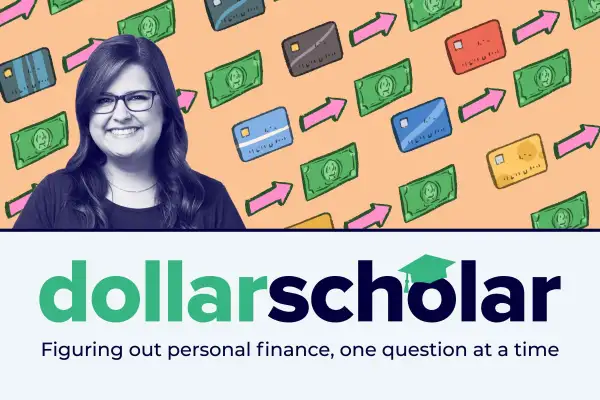Dollar Scholar Asks: Is a Credit Card Cash Advance a Bad Idea?

This is an excerpt from Dollar Scholar, the Money newsletter where news editor Julia Glum teaches you the modern money lessons you NEED to know. Don't miss the next issue! Sign up at money.com/subscribe and join our community of 160,000+ Scholars.
Despite its missing comma, I absolutely love the Olivia Rodrigo song “bad idea right?”
It’s not only a banger, it’s also highly relatable. I, too, regularly do things I know full well are bad ideas. Sometimes it’s because I’m not thinking clearly; other times, I’m being purposefully rebellious.
Drying my entire load of laundry because I’m too lazy to hang up my shirts: bad idea, right? (Yes.) Hitting play on another episode of Star Wars Rebels even though it’s past my bedtime: bad idea, right? (Yup.) Eating a third slice of pizza despite already having heartburn: bad idea, right? (Obviously.)
I also get tempted every time I go to take cash out of an ATM. The devil on my shoulder says to buck the system and use my credit card instead of debit, but my Dollar Scholar brain knows that’s a bad idea… right?
Should I ever use my credit card to get cash?
I emailed Monique White, head of community at Self Financial, to get the scoop. White tells me that when I use my debit card to take cash out of an ATM, I’m withdrawing from my checking account — but when I use my credit card to do so, I’m essentially pulling cash from my line of credit.
This is called a cash advance, and while it might be convenient, there are a handful of reasons it’s incredibly risky.
For one, White says, cash advances tend to be expensive.
They usually come with high interest rates. I just downloaded the cardmember agreement for my American Express, for instance, and though my regular annual percentage rate for purchases is 24.24%, the APR for cash advances is 29.99%. Interest starts accruing on the transaction date, too — no grace period.
On top of that, there’s usually a fee to get a cash advance — per my Amex agreement, it’s $10 or 5% of the amount of each cash advance, whichever is greater. Compare that to the fee for using a debit card at an ATM, which is usually free if I use a machine in my bank’s network and generally under $5 (often reimbursable) if I use one out of it.
Let’s say I get a $1,000 cash advance, and it takes me a month to pay Amex back. At minimum, I’m on the hook for about $1,075 — and that’s if the ATM owner doesn’t charge its own usage fee.
That’s a pretty costly withdrawal. Even banks admit it: “There is no way of paying less for cash advances,” Chase writes on its website. “For this reason you may want to consider using them infrequently and only for emergencies.”
Cash advances can also affect my credit score. Like any other loan, White says they're "expected to be paid back in full plus interest and fees.” And in the meantime, they raise the balance owed on my credit card.
Translation: The stakes are high. If I don’t make payments on time, my credit score is all but certain to go down. Ditto if I take out so much cash that it pushes my credit utilization ratio over the recommended 30% threshold.
So, is there a non-debit-card way to get cash that won’t totally screw up my personal finances?
In many cases, loans aren’t really the answer, as White points out that they can be risky and costly in their own ways. (It’s not uncommon for predatory payday lenders, for instance, to charge 400% APRs and kick off debt cycles that become near-inescapable for borrowers.)
If I need cash and can’t get it from my checking account, she suggests supplementing my income by working for rideshare or delivery apps, taking on tutoring gigs and considering freelancing. That way it’s on my terms — not my credit card company’s.
“It’s important for someone to consider how adding a new balance to their credit card will impact their current budget,” White says, adding that someone who's already struggling to make minimum payments “should borrow as little as they can to minimize the risk of being late on their payment because of affordability [and] how it will impact their score.”
Sophoan Prak, a certified financial planner at Vanguard, says that, ideally, when I’m in a cash crunch, I should be able to tap my emergency fund: an easy-to-access account in which I keep three to six months of expenses. High-yield savings accounts and money market funds are good options here.
The bottom line
Using my credit card to get cash from an ATM might be super convenient, but it’s treacherous. Cash advances, as they’re called, tend to have sky-high interest rates, hefty fees and consequences on my credit score.
I can’t forget the big picture.
"When the unexpected expense inevitably arises, consider all of your options and select the path with the lowest risk to your future, long-term finances,” Prak says.
More from Money:
How Do I Avoid Paying ATM Fees All the Time?

